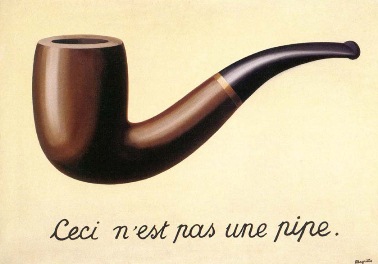 |
The Treachery of Images displays Magritte’s attempt to have the viewer question their reality. The painting portrays a large single pipe, and at the bottom of the painting, in French, states “This is not a pipe.” Magritte’s point is simple: the painting is not a pipe; it is an Image of a pipe. An anecdotal story is that when Magritte was asked if the painting was a pipe, he replied that of course it is not a pipe, and suggested that they try to stuff it with tobacco. He used the same technique in a painting of an apple, portraying a large green apple, with the line “This is not an apple. |
 |
David Hockney (born 9 July 1937) is an English painter, draughtsman, printmaker, stage designer and photographer. He lives in Yorkshire, and Kensington, London. Hockney lived on and off for over 30 years in California. An important contributor to the Pop art movement (*) of the 1960s and he is considered one of the most influential British artists of the 20th century. "I'd first visited Vichy in, I think, 1968 It's a very pretty town with a park in the middle, a kind of formal garden, and they use this false perspective of trees to make it look longer than it really is. And I thought, it's marvellous, the whole thing is like a sculpture " |
 |
Niko Pirosmani gradually taught himself to paint. One of his specialties was painting directly into black oilcloth. His paintings were represented at the first big exhibition of Georgian painters in 1918. From 1920th few articles were published about him in Georgian periodical press. Interest in Pirosmani increased in 1950's after many books were published in Georgia, Russia and other countries. Biographical film and plays were created, musical compositions were composed. His paintings were exhibited in distant countries, like the Soviet Union and Western Europe |




